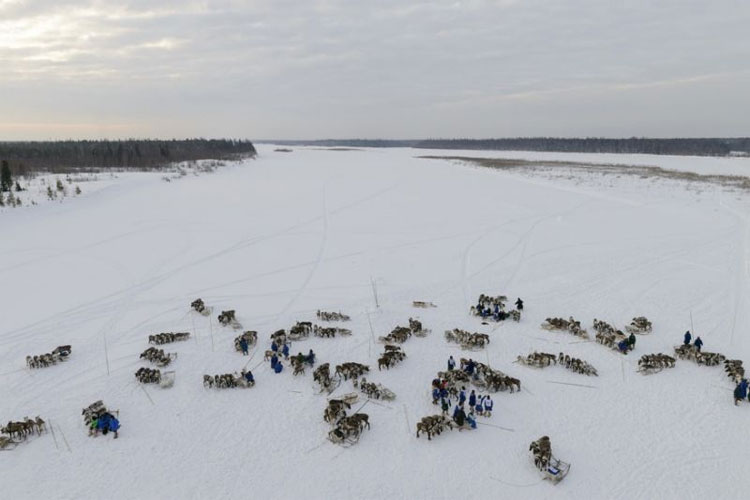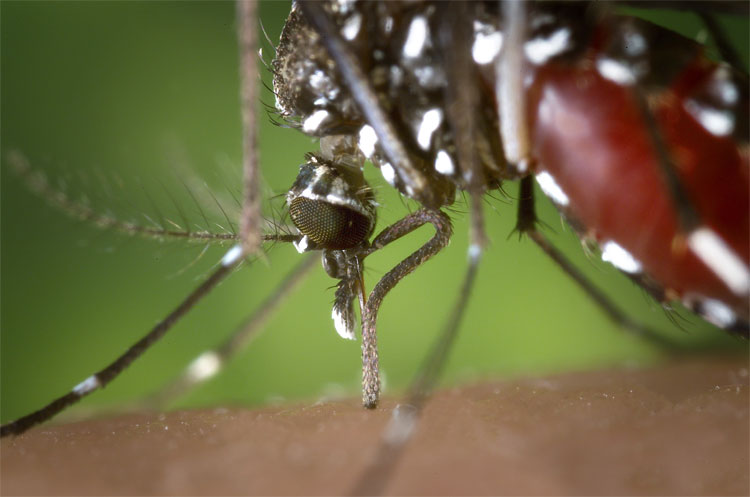5 dangerous diseases that attack humanity due to climate change
Development science helps people prevent many dangerous diseases. But, climate change is generating new deadly diseases.
Climate change has caused many diseases to change unpredictably and spread quickly.
Minimizing global warming can help prevent the following 5 scary diseases:
1. Anthrax
The uncontrolled amount of methane released into the atmosphere, causing the temperature of the Earth to rise, makes the permafrost in Siberia fade away.
When these ice sheets dissipate, the deadly disease is buried in which hundreds and thousands of years have the opportunity to "revive" , quickly spread to people and animals.

Melting ice causes anthrax to "revive".
A recent reference to threats appears that, in July 2016, a 75-year-old reindeer with ice had caused the first outbreak of anthrax since 1941.
This outbreak killed more than 2000 reindeer and sickened 13 Siberian people.
2. Zika fever
When the temperature rises in high latitude areas, tropical diseases have the opportunity to "migrate" to temperate regions, which are inherently unable to cope immediately with mosquito-borne diseases like Zika.

Earth warms, ideal conditions for Zika virus to grow.
In the United States, for example, virus-carrying mosquitoes cross the US border and spread throughout Southern Florida. The US government must declare emergency medical conditions.
Andrew Monaghan, an atmospheric expert at the National Center for Atmospheric Research (Colorado, USA) said:
"The warmer the Earth is, the faster it grows from eggs to adult mosquitoes, and they can quickly compel more viruses."
3. Zombie disease
This may be another deadly virus that is being kept safe under permafrost. But when melting ice, Neanderthal virus, smallpox and other ancient diseases will be returned to the environment after thousands of years.

Another deadly virus is being kept safe under permafrost.
In 2015, researchers discovered a giant virus that could still be transmitted after being buried in permafrost for 30,000 years.
Although the virus only infects amoeba, there may be other types of dangers for humans hiding under permafrost.
Both Neanderthals and modern humans live in Siberia 28,000 years ago, so it is possible that the types of pathogens spread to both people still around.
4. Tick-borne disease (Tick-borne)
Ticks are organisms capable of spreading diseases like mosquitoes, they will be more active, moving to new areas when climate changes, summers are hotter and longer.

Ticks.
Babesiosis is a tick-borne disease, increasing in number in the United States. In 2011, more than 1100 cases of Babesiosis infection from 15 states were reported to the US Centers for Disease Control and Prevention.
Lyme disease , also called chronic rash caused by hard-bodied ticks (Ixodiae) infects the pathogenic Borrelia burgdorfrei , showing signs of spreading.
In the Northern Hemisphere's temperate regions, Lyme disease occurs with a high degree of circulation, becoming more prevalent as the herds of deer, deer grow, and this dangerous host has been able to adapt. live near people.
5. Cholera
Cholera outbreaks exploded along with climate change because pathogenic bacteria tend to like warm weather and warm water.
This disease spreads in polluted water environments, which can increase in countries with low sanitation.

Climate change helps cholera to grow faster.
High temperatures and violent storms due to climate change cause flooding, making water polluted. Every year around the world, about 100,000 people die from cholera.
Dr. David M. Morens, senior adviser to the Director of the Institute for Allergy and Infectious Diseases said:
"Cholera is suitable for warm weather, the Earth is warmer, warmer water makes cholera even more favorable. Climate change can make cholera much worse."
- Climate change changes the evolution of mankind
- How is climate change damaging our health?
- UN: dangerous climate change like war
- What happens to humanity when the temperature of the earth increases by 4 degrees C?
- Will there not be enough bananas to feed humanity due to climate change?
- This is how Dubai copes with climate change
- Video: Dangerous germs hidden in Arctic ice are melting
- Climate change makes insects more aggressive than ever
- Why are more and more new viruses threatening humans?
- What is Climate Change?
- The extinction of mammoths is warning humanity
- These animals are still proliferating even though the sea is dying
 Is the magnetic North Pole shift dangerous to humanity?
Is the magnetic North Pole shift dangerous to humanity? Washington legalizes the recycling of human bodies into fertilizer
Washington legalizes the recycling of human bodies into fertilizer Lightning stone - the mysterious guest
Lightning stone - the mysterious guest Stunned by the mysterious sunset, strange appearance
Stunned by the mysterious sunset, strange appearance DNA test method can detect many genetic diseases at the same time
DNA test method can detect many genetic diseases at the same time  8 human health challenges coming decades
8 human health challenges coming decades  Herbs have the ability to cure over 50 diseases
Herbs have the ability to cure over 50 diseases  Network neurons diagnosed 216 rare genetic diseases
Network neurons diagnosed 216 rare genetic diseases  Misconceptions when using condoms
Misconceptions when using condoms  Detected 2,200-year-old mummy with obesity caused by eating a lot of sugar
Detected 2,200-year-old mummy with obesity caused by eating a lot of sugar 